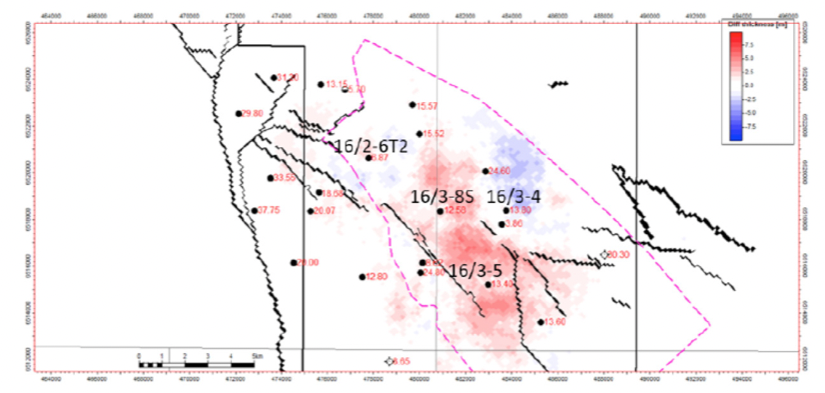Objective
Use static and dynamic data to better understand and estimate volumes for the Johan Sverdup field
Solution
Generate a large set of models capturing subsurface uncertainties using the ResX ensemble-based reservoir modelling tool
Outcomes
- Streamlined data integration and reservoir modelling
- Improved subsurface understanding of permeability and thickness by consistently using all available data (static and dynamic)
- More time for team to analyze results and focus on field planning
Project Description
Big decisions, limited data
Multi-billion dollar decisions are often made with very little data and the uncertainties associated with these are usually anchored to a single base case and/or a small set of scenarios. The key to reducing the risks associated with this approach is to create as large and diverse a set of subsurface models as possible which consistently honor available static and dynamic data.
During the exploration and field development phases, well test data are often gathered and used to assess field potential. However, these data are not transferred to the reservoir model in a consistent manner. Therefore, valuable information about reservoir properties can be overlooked in the assessment.
Integrating data with ResX
Using ResX, dynamic data including drill stem test (DST) build-up pressure derivatives together with static data inputs are used to condition the models. The solution combines these data, the subsurface know-how of the asset team, reservoir physics, and machine learning algorithms to generate an ensemble of reservoir models. The results from this full suite of models provide a more reliable view of subsurface uncertainties thus reducing the risk of the chosen development strategy.

Median of the difference in sand thickness for the initial 200 ensemble members (top) and the updated set conditioned to DST data (bottom). Red/blue colors indicate an increase/decrease in the sand thickness. Wells with DST data are labeled in black. (SPE 181352, Figure 12)
Solution Highlights
- Static models were simultaneously matched with dynamic DST data from four tests.
- Large unphysical updates during dynamic data conditioning were avoided through small and local geostatistically consistent updates to a large number of model variables, while ensuring that key subsurface uncertainties were captured and propagated throughout the entire reservoir modelling and data conditioning process.
- By including DST information in the reservoir modelling process, clear spatial trends in the sand thickness and permeability were revealed which improved initial volume estimates.
- The solution enabled frequent model updates as new data arrived, and an automated workflow assisted in analyzing new results for management decisions.
Asset highlights
The Johan Sverdrup field is in the Upper Jurassic Intra-Draupne Formation sandstone, consisting of unusually coarse grained time-transgressive sheet siliciclastic sediments, with an average porosity of 28%. Permeability from cores ranges from 0.5 to 40 Darcies, and formation thickness ranges from 2 to 38 meters over an are estimated at 200 km2. Reservoir properties vary significantly across the field. (source www.sciencedirect.com)
References
For more details check out SPE 181352
Picture courtesy of Equinor ASA. We would like to thank the Johan Sverdrup licensees: Equinor, Lundin Norway, Petoro, Aker BP and Total for permission to publish the paper
